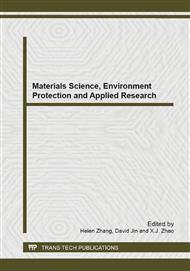p.63
p.67
p.72
p.77
p.81
p.85
p.89
p.93
p.98
Numerical Analysis on Heat Transfer and Oxidation Characteristics of High-Temperature Steam Pipes in Supercritical Units
Abstract:
In this paper, for Super304H steel, the growth law of oxide films and the heat transfer characteristics between the pipe and the working fluid were investigated by using numerical software ANSYS, which simulated comprehensively the effects of pipe size, flow rates of steam, flue gas temperature, and steam temperature on the formation and thickness of the oxide film. A bigger pipe wall thickness, a smaller steam flow rate or a higher flue gas temperature will lead the faster growth of the oxide film thickness, the heat flux density through the wall being smaller and the wall temperature being higher. With increases in steam temperature and thickness of the oxide film, the heat flux through the wall decreases with a small amplitude, and the average temperature of tube walls increases slightly.
Info:
Periodical:
Pages:
81-84
Citation:
Online since:
March 2014
Authors:
Price:
Сopyright:
© 2014 Trans Tech Publications Ltd. All Rights Reserved
Share:
Citation:


